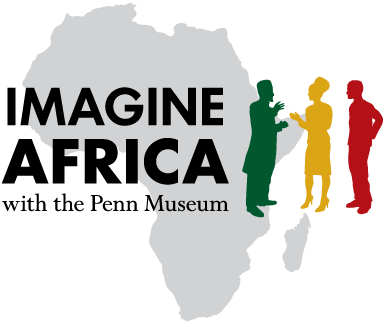Komande had to drive us through the wait-a-minute trees to our bomas because the herd of elephants was not budging. We teetered over the uneven packed dirt and two huge elephants appeared in the headlights just a few meters away from the door of my boma. I had been given two keys and I didn’t bother to mark them thinking I’d just figure it out by trial and error every time. But tonight I didn’t have a milisecond to spare. I just chose one and hoped for the best. Unfortunately the door of the van was not facing my boma door. The ascari got out and I followed. I skipped past the headlights to my door and with shaking hands, stuck the key in the lock. It was the right one! I foolishly waved to the rest of the guys in the van like I was saying goodnight at the end of the Price is Right. And I rushed into the boma and locked the door behind me. I double checked it about four times to make sure it was locked.
I was reading my book under the reading lamp when the sounds of ripping and chewing and the occasional gut rumble started getting louder and more frequent. I realized that I’d read about 4 pages of Phillip Roth’s impressionistic account of his highschool experience in 1960s Newark New Jersey and I hadn’t even absorbed a single syllable. The sounds got louder and I decided to go to sleep.
I’d fallen asleep briefly only to be woken up by the sound of footsteps and rusting outside my window. The curtains were illuminated by a flickering flashlight. “Yes?!” I said, startled, not realizing I was just asking an elephant a question.
I held onto the detachable light from my video camera in case I needed to visually witness anything. An elephant, a big one, started using my front door as a back scratcher. It sounded like he was going to bust right through the stone. He started grabbing at the thatched roof with his truck and ripped the straw right off. My hands were shaking. I might have been shaking the bed. I thought he was going to rip the entire roof off, grab me with his trunk and flail me around. Another elephant came around the back and started ripping trees in half with his trunk. It was an amazingly mechanical crushing sound. You can almost feel the wood splinter.
There was also a very strong smell of dung and the occasional bubbling sound followed by a distinctive thhbbbbbbbttt. It was almost laughable if it was so terrifying.
The ascari’s drove to the edge of the nearby road and started flashing a strobe light to make the elephants go away. This was no comfort. If they were doing this, it meant something was wrong. I get the impression that elephants deal with humans on a very personal level. Bill was telling us about a group of surveyors in Laikipia who had a small plane. The elephants were extremely annoyed by the plane and they broke into the hangar at night when no one was there and destroyed everything. How did they know it was there?
Kathleen regaled us with another story of their impetuously human-like behavior. One of the archaeologists at a ranch where she used to study would put out bananas for the elephants every night. When he ran out of bananas, the elephants got so mad… again, the destroyed the place.
I’m sure there are stories of elephants reflecting the brighter side of human behavior but the conversation hasn’t pointed in that direction yet.
The elephants started fighting right outside my door. One trumpetted and they must have clashed tusks. I was afraid they’d back up into my door which was only held in place by a single piece of metal.
I breifly entertained the idea of getting out my video camera and pushing back the curtain, but I was too scared to make any noise.
After about 3 hours of this, they finally seemed to go away. Then the hyenas came. Whooping and cackling. One of them must have set up camp on the other side of the stone wall where my pillow was. I cursed myself for giving up on trying to latch the window lock properly when I’d opened it to hear the night noises a few nights ago. Now I wanted nothing to do with the night noises.
In the morning, I moved aside the curtain expecting to see a giant brown eyeball, but there was only dik dik relieving itself right outside my window. This really made me wonder if the entire wildlife population of the entire continent wasn’t mocking me.
I walked furtively to the dinning area and found Kathleen. I asked her how her night was. She said the elephants tried to come into her banda. I asked if they were trying to knock the door down and she said, “No, they were trying to open the handle.”
At least they were being polite about it.




















